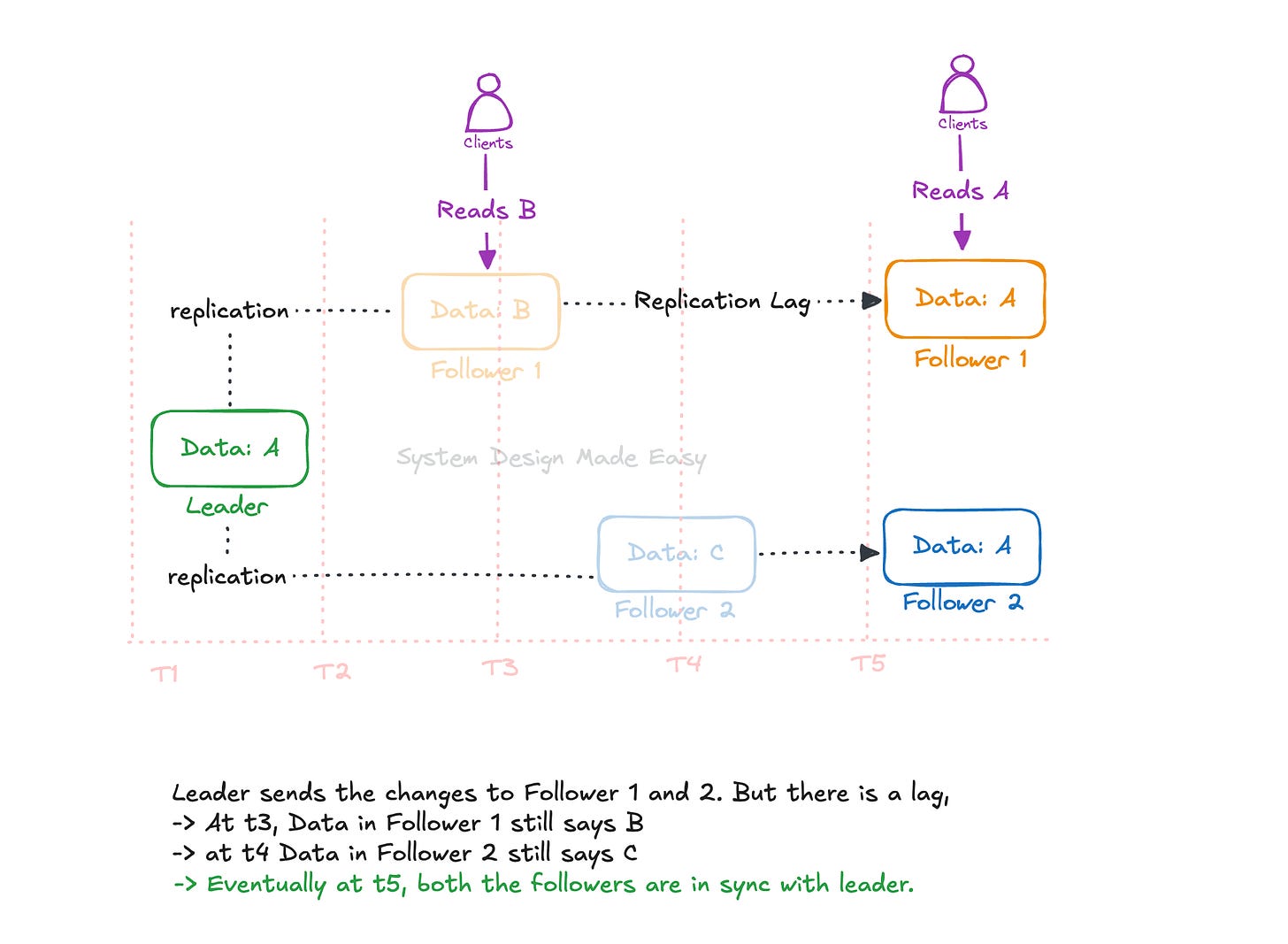What is Eventual Consistency?
In the context of distributed systems, achieving a balance between Consistency, Availability, and Partition tolerance is a key challenge. This balance is addressed by the CAP theorem, which explores the trade-offs between these three fundamental properties. One of the outcomes of this exploration is the concept of eventual consistency, a model that plays a crucial role in systems where availability and partition tolerance are prioritized over immediate consistency.
Eventual consistency is a consistency model that guarantees that, given enough time, all replicas of a data item will eventually converge to the same value. This means that while the system may temporarily have inconsistent data across replicas, it will eventually reach a consistent state as updates propagate through the system.
It is particularly useful in environments where the system needs to remain highly available and responsive, even in the presence of network partitions or failures.
For a deeper dive into the details of the CAP theorem, feel free to check out the earlier article on the topic here
The Trade-off of Eventual Consistency
Eventual consistency reflects the inherent trade-off in distributed systems between the CAP theorem’s three properties:
Consistency: All replicas have the same data at any given time.
Availability: Every request will receive a response, either success or failure.
Partition tolerance: The system continues to function even if network partitions or failures occur between nodes.
In systems that prioritize availability and partition tolerance (i.e., AP systems), eventual consistency is often the best compromise. This allows the system to continue processing requests even if some replicas may be temporarily out of sync with the leader or other replicas.
How Does Eventual Consistency Relate to Replication?
Eventual consistency plays a key role in the way replication is handled in distributed systems. For example, when a leader sends updates to its followers, it doesn’t guarantee that all followers will receive and apply the update at the exact same moment. Instead, the followers will eventually apply the change, but there could be a delay in the process, especially in systems with asynchronous replication.
In asynchronous replication, the leader writes the data and confirms the write to the client before the follower has applied the change. This means that, for a short time, the data might be inconsistent across replicas. However, the system is designed to ensure that over time, all replicas will eventually be updated and consistent again—hence the term eventual consistency.
Why Use Eventual Consistency?
Eventual consistency is often preferred in systems that need to:
Handle high traffic or large-scale data distribution.
Operate in environments with frequent network partitions or node failures.
Prioritize system availability and responsiveness over strict data consistency at all times.
For instance, in a globally distributed system, data may need to be replicated across multiple regions. Waiting for all replicas to be synchronized before confirming a write can result in high latency and poor user experience. Instead, allowing for eventual consistency ensures that users can continue interacting with the system, and the data will be reconciled across replicas later.
Eventual consistency is a powerful concept in distributed systems, offering a flexible way to maintain data availability and responsiveness in environments where strict consistency cannot always be guaranteed. It directly influences the design of replication strategies, particularly in systems that use asynchronous replication. Understanding this concept is key to making informed decisions about how to balance consistency, availability, and performance in your own distributed systems.
What's Next?
In the next article, we will dive deeper into Synchronous vs. Asynchronous Replication, exploring the trade-offs between these two replication strategies and how they impact consistency, performance, and availability in distributed systems.



